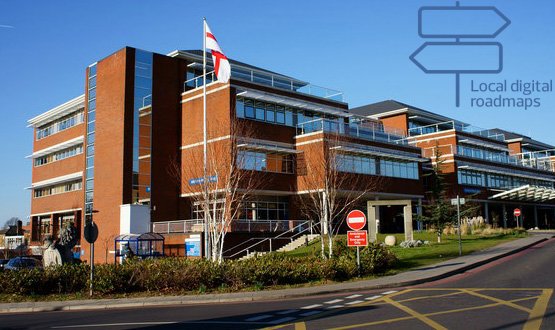Digital Roadmap Focus: South West London
- 7 November 2016

Quick fixes are needed for South West London’s draft local digital roadmap to achieve its paperless vision.
The LDR says a “tactical solution” will help realise short term objectives whilst overcoming information governance, cultural and financial barriers.
The trust wants to “move ahead as quickly as possible” towards making changes, with central funding need to achieve quick gains.
Details for this initial plan include connecting all GP systems to both the medical interoperability gateway and the area’s instance of the Graphnet shared record, allowing shared access to acute information across the footprints four acute trusts, and linking the psychiatric liaison services across the region with South West London and St. George’s Mental Health NHS Trust.
The London context
The footprint includes six clinical care commissioning groups, 11 NHS trusts and six local authorities, covering 1.7 million people. There are pockets of deprivation, an aging population with complex needs and not all the hospital estates are suitable for current healthcare technology.
With nine million in people in London living within five sustainability and transformation and seven LDR footprints, there is a fluid population moving between organisations.
What challenges does the LDR face?
The financial hurdles are large. There’s a projected financial deficit in the South West London NHS organisation of £900 million by 2020/21 without radical change.
Just last month, the Care Quality Commission rated St George’s University Hospital NHS Foundation Trust “inadequate” and recommended to be placed in special measures.
How much money is being spent on IT?
Digital Health Intelligence found a range of IT spending among the acute trusts. In 2013, St George’s University spent £14 million on IT, in contrast the Royal Marsden NHS Foundation Trust spent the least, with £6 million in 2014.
What’s on the footprint’s wish list?
Alongside achieving the “tactical solution”, it also sees the London Health and Care Information Exchange as a “fundamental element” to developing the healthcare across the region and acting as a “federated” service.
By the end of the five year plan the LDR aims to embed virtual consultation systems, have a health and care information exchange and a common information sharing framework agreement.
How are they going to fund it?
With an estimated capital cost of £17.9 million, and revenue cost of £9 million, South West London is looking for money from the Estates and Technology Transformation Fund and from national funding earmarked for a ‘paperless NHS’.
South West London’s sustainability and transformation plan, which covers a larger area than the LDR, was released last month and stated that £80 million of capital was needed to invest in “whole systems intelligence”.
What is the current digital maturity?
Out of the acute trusts Epsom and St Helier University Hospitals Trust features the highest in the Digital Health Intelligence index with a score of 87 and rank of 18/153 last month. The Royal Marsden ranked lowest at 142/153 and a score of 56.
What systems are some of the bigger organisations using?
Both St George’s University and Croydon Health Services NHS Trust use Cerner Millennium for their EPR and PAS. The Royal Marsden uses an in-house system called HIS for its EPR and PAS.
What happens if no central funding is made available?
For South West London to achieve a “strategic solution and population health platform”, it needs national funding.
However, it’s unclear what financial help will be available. A NHS England spokeswoman said that “the process for confirming local investment to help deliver LDRs has not yet been agreed”.
READ MORE:
* 'Inadequate' St George's stops RTT reporting
* Digital Roadmap Focus: Cheshire
* Third STP published asks for at least £80m for digital
The main organisations in the footprint include:
– CCGs: NHS Merton, NHS Croydon, NHS Kingston, NHS Richmond, NHS Sutton, NHS Wandsworth
– Providers: Central London Community Healthcare NHS Trust (Community Health), Croydon Health Services NHS Trust (Acute Trust), Epsom and St Helier University Hospitals Trust (Acute Trust), Hounslow and Richmond Community Healthcare NHS Trust (Community Health), Kingston Hospital NHS Foundation Trust (Acute Trust), London Ambulance Service NHS Trust, South London and Maudsley NHS Foundation Trust (Mental Health), South West London and St George’s Mental Health NHS Trust (Mental Health), St George’s University Hospitals NHS Foundation Trust (Acute Trust), The Royal Marsden NHS Foundation Trust (Acute Trust), West Middlesex University Hospital NHS Trust (Acute Trust)- this final trust was acquired by Chelsea and Westminster Hospital NHS Foundation Trust last year
– Local authorities: Croydon Council, London Borough of Richmond upon Thames, London Borough of Sutton, Merton Council, Royal Borough of Kingston upon Thames, Wandsworth Borough Council




